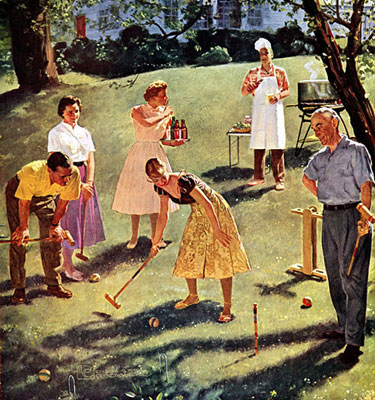 A couple of summer months filled with many beachside lunches of paella so good and so long ago that I am still chasing the memories of a perfect paella. My sister and I were in the Catalonian village of Arenys de Mar for a good part of the summer. On the wide, white beach surrounded by rugged hills were a handful of rustic 'restaurants' that made only paella over wood fires. They were makeshift structures covered with bright pieces of miss-matched canvas tacked down to keep the strong Spanish sun and ocean breeze at bay. These little makeshift restaurants were always busy for lunch, the only meal that they served and I had my favorite one.
A couple of summer months filled with many beachside lunches of paella so good and so long ago that I am still chasing the memories of a perfect paella. My sister and I were in the Catalonian village of Arenys de Mar for a good part of the summer. On the wide, white beach surrounded by rugged hills were a handful of rustic 'restaurants' that made only paella over wood fires. They were makeshift structures covered with bright pieces of miss-matched canvas tacked down to keep the strong Spanish sun and ocean breeze at bay. These little makeshift restaurants were always busy for lunch, the only meal that they served and I had my favorite one.
The beach side paella restaurateurs were waiting like gulls as the little boats motored back to port around 10 o’clock in the morning. Each boat filled with the fresh caught fish and shellfish still moving violently seeking to be set free. There was fish to fillet and chunk, stock to make, onions and peppers to chop and most importantly the wood-fire had to be started, time was of the essence.
My favorite restaurant had a round stone fire pit built on the sand. A variety of wood collected from the beach was piled into the pit covering yesterday's scrunched up newspaper which was barely visible in the center. A wooden match was struck and the day's cooking commenced. When the flames burned down, the cook balanced a grill on top of the stone pit.

 This weekend in the United States we celebrate Labor Day. A holiday that originated in the 1880's to give the working citizens of America a day of rest.
This weekend in the United States we celebrate Labor Day. A holiday that originated in the 1880's to give the working citizens of America a day of rest.  What is the all-time best dunking cookie? Italian biscotti. Whether it's a glass of sweet wine or a mug of steaming coffee, biscotti's firm, crunchy texture stands up to dunking like no other cookie I know.
What is the all-time best dunking cookie? Italian biscotti. Whether it's a glass of sweet wine or a mug of steaming coffee, biscotti's firm, crunchy texture stands up to dunking like no other cookie I know. Holidays can be treacherous times for anyone trying to shed weight…unless you’ve learned how to fill yourself up and fake yourself out with The Skinny versions of the foods you crave!
Holidays can be treacherous times for anyone trying to shed weight…unless you’ve learned how to fill yourself up and fake yourself out with The Skinny versions of the foods you crave! These tiny, almost impossibly perfect little Forelle pears are the kind I could only imagine in an Hironymous Bosch painting. They weigh almost nothing and go down in two bites.
These tiny, almost impossibly perfect little Forelle pears are the kind I could only imagine in an Hironymous Bosch painting. They weigh almost nothing and go down in two bites.
